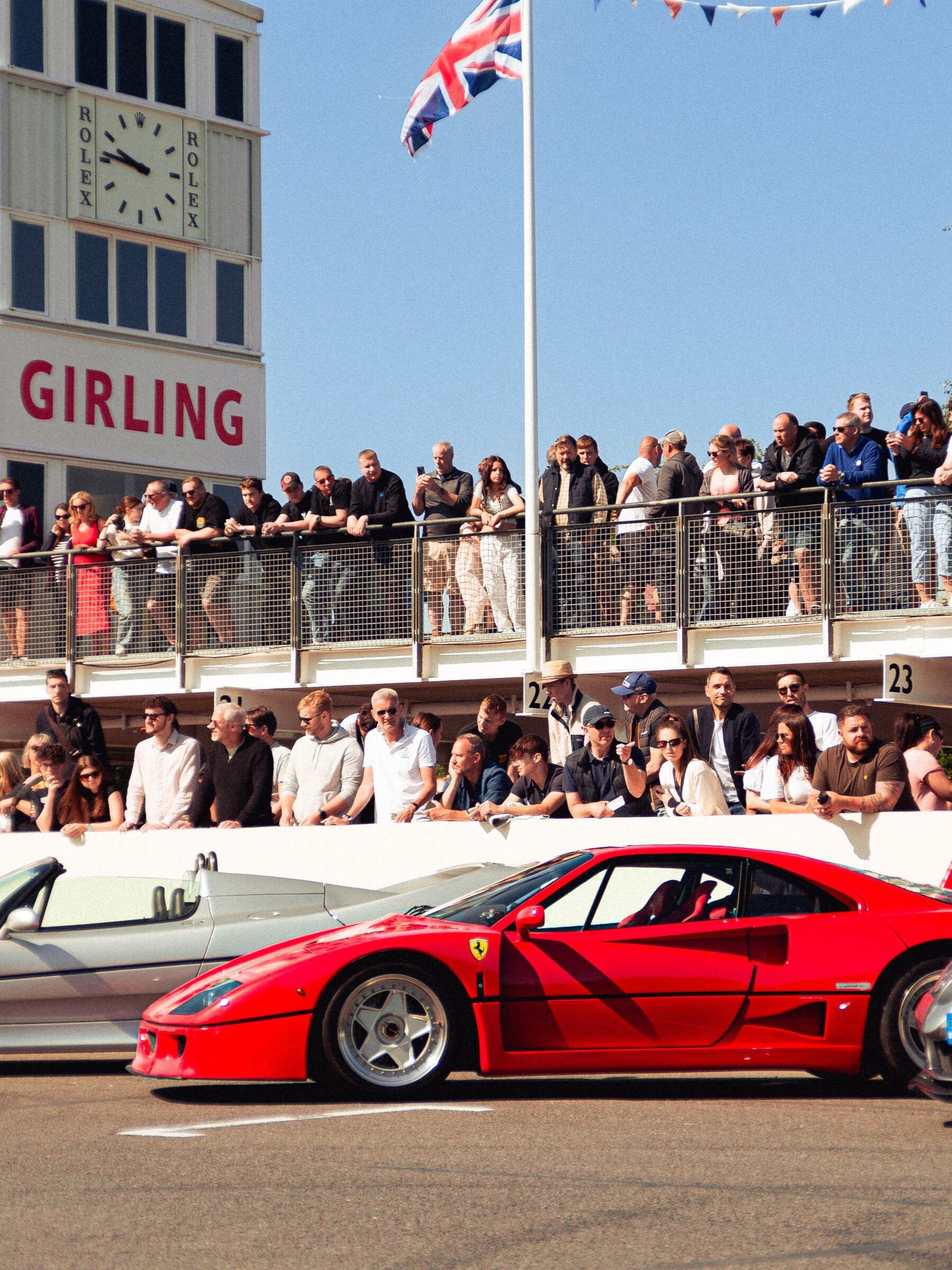Axon’s Automotive Anorak: 100 years of Citroën innovation
One hundred years ago (4th June 1919 to be exact) the visionary industrialist Andre Citroën founded one of the most individual, innovative and important vehicle manufacturers the world has ever seen: Automobiles Citroën.

A Marmite car brand for the unanointed, but one of my personal favorites (as regular Anorak readers may have already guessed), from the day the very first Citroën motor car was built in Paris in June 1919 (the Type A 10HP; the first mass-mass-produced car produced in Europe), Andre’s eponymous vehicle company become arguably the most innovative vehicle maker in the world, even kicking other great motoring pioneers into touch, such as Saab, Panhard and Mercedes-Benz.
Love ‘em or hate ‘em, there can be no denying Citroën’s major contribution to furthering the motoring cause over the last century. Here is a year-by-year summary of just a few of Citroën’s key innovations and contributions to the motoring world. Learn and enjoy…

-1919: Europe’s first mass-produced car launched; the Citroën Type A 10HP
-1922: The world’s first car designed specifically with the female motorist in mind; the yellow-only Type C 5HP ‘Petite Citron’
-1922: Marketing innovation; Andre Citroën arranges for a light aircraft to write the name ‘Citroën’ in the sky over Paris to create a buzz at the 1922 Paris Motor Salon opening
-1922: Andre Citroën creates Europe’s first dedicated car finance company; SOVAC
-1922: Citroën offers French towns free directional road signs incorporating the ‘double chevron’ Citroën logo as effective advertising throughout the Country, with over 100,000 signs in place by 1925
-1922: Citroën introduces a range of pedal cars so that even kids can own a Citroën; Andre’s ambition being that a child’s first words will be Mama, Papa, Citroën!
-1925: Europe’s largest dealer and service network, with 5,000 Citroën agents in France alone, plus numerous overseas production facilities, including Slough in the UK
-1922-23: A Citroën B2 half-track becomes the first ever vehicles to cross the Sahara, between Algeria and Mali
-1924: The new Citroën B10 is the first European all-steel car, using stamped and welded sheet metal for increased safety and stability
-1924-25: Eight Citroën B2 half-tracks become the first ever vehicles to successfully cross the African continent
-1925: More innovative marketing; Citroën puts his name on the iconic Eiffel Tower using over 250,000 light bulbs, which remain there until 1934; the once and only time advertising has been permitted on this Parisian landmark
-1926: Citroën introduces Europe’s first vehicle service repair manual and parts catalogue
-1926: The new Citroën B14 introduces the world’s first brake light as standard, almost 30 years before it becomes a requirement of the Highway Code. The B14 also debuted power-assisted braking on all four wheels, illuminated instruments and adjustable front seats, unheard of in 1926
-1927: Andre Citroën pioneered health care, canteens, creches, 13-month salaries per annum, plus discounted food and clothing, for his 30,000+ work force
-1929: In just ten years since its founding, Citroën had become Europe’s largest car maker, and the second in the world, after Ford
-1931-32: Citroën’s third great expedition saw the first ever vehicles to cross the Himalayas and the Gobi Desert, from Lebanon to China
-1932: Citroën introduced the world’s first ‘floating-power’ engine, with rubber blocks mounted between the engine and chassis to reduce noise and vibrations, plus increase passenger comfort
-1933: Citroën set a world distance record with the 8hp ‘Petite Rosalie’, completing 300,000 kilometres non-stop in 134 days at an average speed 93 km/h (57 mph) at the banked Montlhery motor circuit, south of Paris

-1934: Citroën’s first major motoring bombshell was introduced to immediate acclaim and awe at the Paris Salon; the 7CV-11CV ‘Traction Avant,’ the first real ‘modern’ motor car to combine a steel monocoque chassis, front-wheel-drive (as per all Citroën models produced since 1934), hydraulic brakes, independent suspension, a wide track, lower stance and reduced weight, setting the new benchmark for all cars, most rivals taking many years to catch-up
-1939: Citroën’s first front-drive, low floor pioneering commercial vehicle (a world first) – the TUB – was launched with production cruely curtailed due to the outbreak of World War II
-1947: Post-war, the TUB is replaced by the iconic Type H commercial vehicle, a truly innovative and versatile van and now a firm favourite with street food outlets the world over

-1948: That most French of all cars, the legendary 2CV, is introduced to great fanfare, the model soon being regarded by many motoring experts as one of the greatest and most important cars ever made
-1952: Citroën reveals its pioneering hydropneumatic self-levelling air suspension on the rear of selected Traction Avant models
-1955: Citroën drops yet another automotive bomb with the introduction of the revolutionary DS. With its futuristic aerodynamic looks, large glass area, alloy bonnet, fibreglass roof, power steering, disc brakes, self-levelling hydropneumatic suspension (enabling the car to be driven on three wheels!), semi-automatic transmission, single-spoke steering wheel (which became a Citroën trademark feature), sublime handling, braking and ride quality, the DS was an instant smash, with 12,000 orders being placed on the first day of the model’s reveal. 80,000 sales were made in France alone by the end of the Paris Salon two weeks later. The DS remains one of the most significant cars in automotive history, still looking modern today, 65 years after its launch
-1961: The uniquely-styled Ami 6 becomes Europe’s first car with oblong headlamps as standard
-1966: Rolls-Royce buys a licence from Citroën to use its patented air suspension for its new Silver Shadow range, with the system still used by the Goodwood-based exclusive car maker today
-1967: The frontal styling of the DS received a radical shark-like facelift for the 1968 Model Year, including the world’s first dual turning headlamps that moved in unison with the steering wheel
-1968: The fun-loving Mehari becomes the world’s first ABS plastic-bodied production car

-1970: Two landmark Citroëns were launched at the 1970 Geneva Motor Show, the staggeringly advanced and aerodynamic GS – a mid-sector family car that made all rivals seem antique in an instant – plus the ambitious, wild and exotic SM, a space age Maserati V6-powered luxury GT with too many innovations to list, highlights including the world’s first stopping distance dial as part of the speedometer
-1970: The Ami-based M35 coupe becomes a test-bed for Citroën’s rotary Wankel engine, developed jointly with NSU
-1973: The short-lived GS Birotor becomes Citroën’s first ‘regular’ production rotary-powered model, soon killed-off by the mid-1970s fuel crisis
-1974: The advanced luxury CX replaces the much-loved DS and wins the prestigious Car of the Year title
-1982: The new BX is the first ‘regular’ production car to feature a weight-saving plastic bonnet and tailgate
-1989: The XM succeeds the CX and introduces the first electronic hyperactive suspension and a separation glass panel to isolate the opening tailgate from the passenger compartment to prevent drafts and rain entering the cabin
-1991: The mid-size ZX introduces self-steering rear axle
-2003: The Citroën C3 Pluriel is the first production car to offer a range of body configurations; transformable from a hatchback to a cabriolet, four-seater spider and pick-up

-2005: The new C4 is the first car to have a fixed steering wheel hub to maximise airbag deployment efficiency and ergonomics
-2014: The C4 Cactus introduced the car park bump preventing ‘Airbump’ system
-2017: Citroën’s Advanced Comfort programme introduced suspension with Progressive Hydraulic Cushions
As you can see from this very long list, Citroën has certainly contributed a huge amount to advancing personal transportation, more so than any other single car company.
If you’ve never really liked or understood Citroëns, it’s your loss and I would encourage you to sample an old 2CV, DS or SM. It’s probably too optimistic and unrealistic to hope that Citroën will continue to lead the way in technical developments over the next 100 years, but you never know…
Axon's Automotive Anorak
Citroen
2CV
7CV
11CV
Traction Avant
SM
DS
C4
C4 Cactus
C3































































